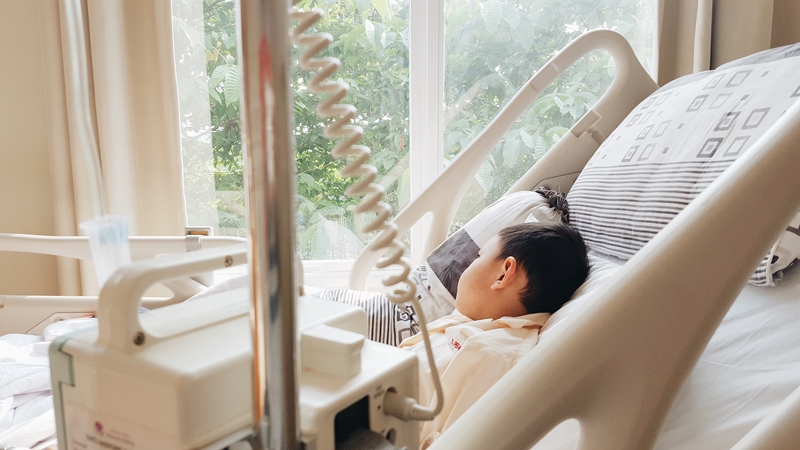Sound is an extremely important factor in healthcare design. Noise pollution is typically everywhere at all times, and in our busy lives we learn to tune it out. This becomes a little more difficult when you’re recovering – sounds you might not have noticed before can become very irritating. Well-designed acoustics in healthcare facilities can contribute towards patient and staff comfort, as well as promoting recovery, according to a 2012 study from AECOM.
Noise has consistently been among the top five most common patient complaints about healthcare facilities, as stated in a Press Ganey survey. The World Health Organisation has outlined that patients should not be subject to more than 35-40 decibels during recovery. For some context, 35 decibels is roughly the equivalent of a person whispering to you, or the sound of a fan in a desktop computer.
 A sound rest is vital to recovery.
A sound rest is vital to recovery.You’ve probably already thought to yourself “that’s not very loud at all” and you’re correct – it’s not very loud, and acoustic design is a complicated process. Here are the three key factors your practice must be designed to manage:
1. Quiet recovery
Different rooms will naturally require different designs based on their size, shape and function. Recovery areas should be quiet, and the key benefit of this is allowing patients to sleep naturally – whether through the night or merely for a few hours in a recovery room. Disruption from sleep can have adverse effects on recovery, and as such, measures need to be taken to absorb, reflect or mask disruptive frequencies – all of this can be done with the right materials and layout.
2. Speaking volumes
You already know the value of clear, competent communication in a healthcare setting. In light of this, it’s of great importance to create spaces where conversation can easily flow back and forth without abstraction or ambiguity. The aforementioned AECOM study outlines that in addition to disruption of recovery, environments that lack the appropriate acoustic qualities can also increase stress in staff. As healthcare professionals, your staff already have enough to juggle without the additional annoyance of needlessly drawn out conversations.
 There are times where clear communication is vital – the acoustics in your healthcare facility should reflect this.
There are times where clear communication is vital – the acoustics in your healthcare facility should reflect this.3. Clean Sound
When it comes to managing sound, not all materials are created equal. Foam rubber might work in a concert venue, but it would be very difficult to sterilise in a healthcare environment. This is why your acoustic materials need to be selected not just to influence sound waves in the appropriate way, but also meet the same hygiene standards as the rest of your medical practice.
Reducing sound in an environment such as a day surgery or specialist facility is a delicate balancing act where there is no all-encompassing methodology. It depends on a number of variables, and that’s why you need a trusted advisor on board from the earliest stages of your development.
For more information about smart healthcare design, contact Space For Health today.



